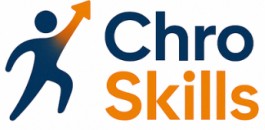
Understanding the Role of Employee Assessment
Grasping the Importance of Employee Performance Assessments
In the dynamic world of human resources, employee assessments are more than just a box-ticking exercise. They are crucial for evaluating employee performance and facilitating professional development. As a chief human resources officer, understanding the various facets of these assessments fundamentally shapes the nature and effectiveness of your management strategies.
Employee assessments serve as a powerful tool in shaping performance management systems. They provide valuable data that help identify areas where employees excel and where there’s room for improvement. This understanding aids in pinpointing strengths areas and weaknesses, ultimately guiding targeted training and development initiatives.
Furthermore, the assessments help in crafting specific objectives and setting clear performance goals with employees. Clear communication of these goals ensures that employees are aligned with the organization’s expectations, promoting higher employee engagement. The careful evaluation of feedback from performance reviews enhances the ability to develop constructive feedback mechanisms that foster continuous improvement.
Chief human resources officers must also navigate the various challenges inherent in the assessment process. This involves addressing concerns related to bias, ensuring reliable performance evaluation methods are in place, and integrating technology to streamline and enhance the accuracy of assessments. For more insights on mastering high-volume recruitment, visit this comprehensive guide.
Ultimately, understanding the role of employee assessments is the first step in nurturing a robust and adaptive human resources management system that supports both employee growth and organizational success.
Key Skills for Effective Employee Assessment
Essential Skills for Conducting Employee Assessments
Developing key skills for conducting employee assessments is fundamental for Chief Human Resources Officers aiming to enhance both organizational and individual performance. In today's rapidly changing environment, a comprehensive understanding of evaluation methods, feedback mechanisms, and growth opportunities is essential. First, effective communication is paramount. It fosters a culture of openness and trust where employees feel comfortable and valued. This communication should be clear, concise, and constructive, especially during performance reviews and evaluations. Moreover, analytical skills play a crucial role in the assessment process. HR leaders need to analyze performance data, identify strengths weaknesses, and determine areas improvement to facilitate employee development. This includes leveraging performance evaluation tools that provide actionable insights to help steer growth and initiative. Interpersonal skills cannot be overlooked. They are vital for building relationships and ensuring employee engagement. By establishing strong connections within the team, HR leaders can better support employee goals and development plans. Additionally, problem-solving abilities enable HR leaders to address any challenges that arise during the assessment process. Whether it’s identifying degree feedback options or managing employee performance inquiries, these skills ensure the evaluation system remains efficient and fair. Finally, a deep understanding of performance management systems is essential for streamlining assessments help. Systems management includes developing strategies that align with the organization's objectives, and utilizing tools that support continuous improvement. By honing these skills, Chief Human Resources Officers can craft an effective employee assessment strategy that promotes continuous growth and improvement across all levels of the organization.Developing a Comprehensive Assessment Strategy
Crafting a Holistic Assessment Framework
Developing a comprehensive assessment strategy is a critical skill for Chief Human Resources Officers (CHROs), as it lays the groundwork for meaningful employee evaluations and guides performance management. A well-considered strategy not only supports the identification of strengths and areas for improvement but also fosters employee engagement and development. A robust assessment framework begins with defining clear objectives. Understanding what the organization aims to achieve with employee assessments is paramount. These goals can range from improving employee performance and identifying development needs to fostering a culture of continuous learning and feedback. Once the objectives are set, the next step is to identify and implement effective employee assessment tools. These tools should align with the organization’s objectives and be capable of capturing relevant performance data. Options include performance reviews, 360-degree feedback, and employee evaluations. Selecting the right tools is crucial, as they form the backbone of the assessment process. Aligning assessments with organizational goals is essential, ensuring that they contribute to broader business objectives. This alignment helps in enhancing the overall effectiveness of performance management and supports employee growth initiatives. Training the management team on how to utilize these assessment tools effectively is another critical component. This training helps in ensuring consistency and reliability in evaluations across the organization. Training also aids in the accurate identification of employee strengths and weaknesses, providing targeted insights that support growth and development initiatives. Lastly, formulating a structured feedback mechanism is vital. Feedback should be specific, actionable, and aligned with the identified goals. It plays a key role in reinforcing positive behaviors and identifying areas for improvement, contributing to an ongoing cycle of enhancement and employee engagement. For more insights on crafting effective frameworks and engaging methods within employee assessment strategies, exploring engaging methods might offer valuable perspectives.Leveraging Technology in Employee Assessment
Adopting Technological Advancements: The Digital Step
In the modern landscape of human resources, leveraging technology in employee assessments is not just an option; it’s a necessity. HR leaders need to be adept at utilizing digital platforms and tools to enhance the efficiency and effectiveness of the assessment process. Technological tools simplify the collation and analysis of employee data, which is crucial for both performance management and employee development. With advanced platforms, HR professionals can automate feedback processes, making it easier to provide timely and constructive feedback. This consistent feedback is instrumental in employee engagement and helps identify areas for growth. Benefits of Incorporating Technology:- Enhanced Data Management: Leveraging digital tools helps store and manage significant volumes of data efficiently. It provides easy access to employee evaluation data, which can be used to track employee performance over time.
- Improved Assessment Tools: With technology, HR professionals have access to sophisticated assessment tools that can provide nuanced insights into employee strengths and weaknesses. This information is essential for identifying employee strengths and areas improvement.
- Streamlined Performance Reviews: Conducting performance reviews digitally allows for more streamlined processes. Tools such as 360-degree feedback can be seamlessly integrated and help in providing a holistic view of employee performance.
- Effective Employee Training Programs: Digital platforms allow HR to tailor training programs to specific needs highlighted by assessments. This approach ensures that training goals align with organizational objectives.
- Real-Time Feedback Mechanisms: Implementing technology-driven feedback enables instant tracking of employee performance. Continuous feedback through digital platforms ensures that issues are addressed promptly, facilitating ongoing improvement.













